
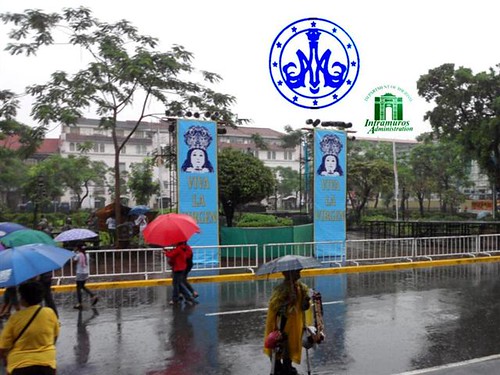
Front of Manila Cathedral minutes before the start of the procession, everything looked nice and ready...too bad it's still raining hard
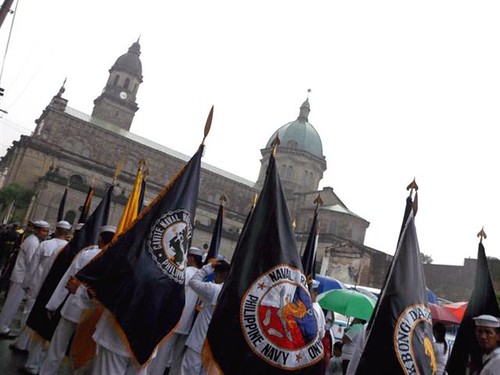
On the other side of Manila Cathedral, approaching Plaza Roma are the different contingents of the Philippine Military
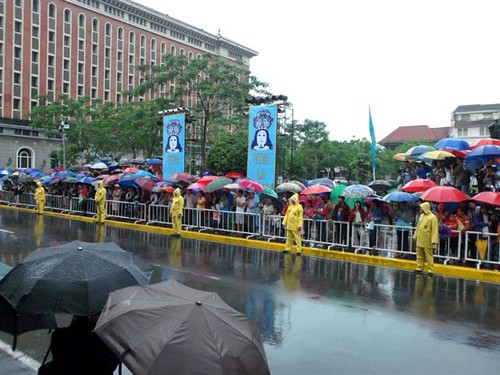
Any moment now...

Leading the procession...
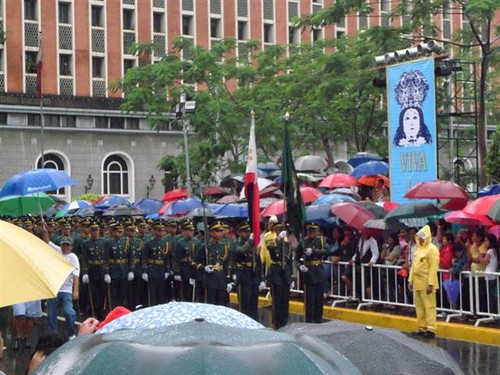
Patroness of the Philippine Army
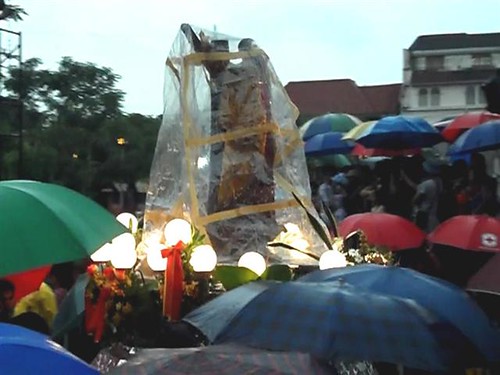
San Andres, patron saint of Intramuros
Andrew, like his brother Simon Peter, was a fisherman. He became a disciple of the great St. John the Baptist, but when John pointed to Jesus and said, "Behold the Lamb of God!" Andrew understood that Jesus was greater. At once he left John to follow the Divine Master. Jesus knew that Andrew was walking behind him, and turning back, he asked, "what do you seek?" When Andrew answered that he would like to know where Jesus lived, Our Lord replied, "Come and see." Andrew had been only a little time with Jesus when he realized that this was truly the Messiah.
From then on, he chose to follow Jesus. Andrew was thus the first disciple of Christ. Next, Andrew brought his brother Simon (St. Peter) to Jesus and Jesus received him, too, as His disciple. At first the two brothers continued to carry on their fishing trade and family affairs, but later, the Lord called them to stay with Him all the time. He promised to make them fishers of men, and this time, they left their nets for good. It is believed that after Our Lord ascended into Heaven, St. Andrew went to Greece to preach the gospel. He is said to have been put to death on a cross, to which he was tied, not nailed. He lived two days in that state of suffering, still preaching to the people who gathered around their beloved Apostle. Two countries have chosen St. Andrew as their patron - Russia and Scotland. Taken from St. Andrew

San Jose in Plaza Roma
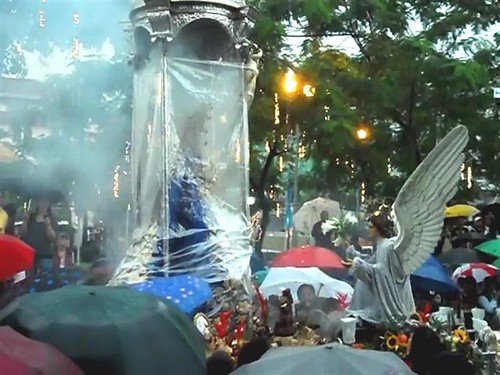
The Annunciation
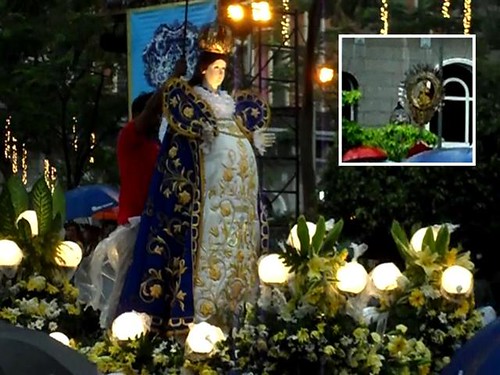
Dela O and the child in her womb
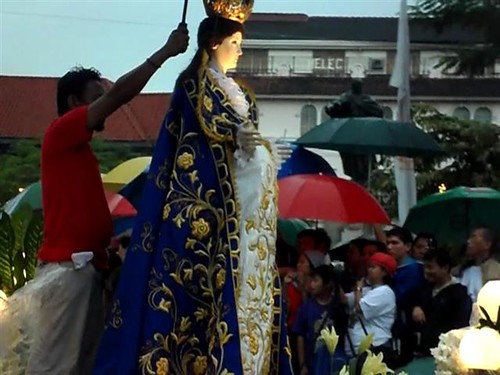
The rain keeps getting in the way...but as they say the show must go on...
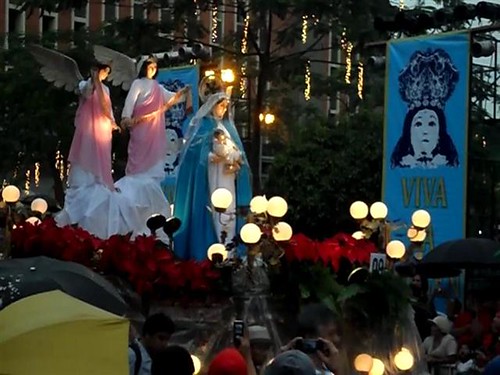
Our Lady of the Nativity
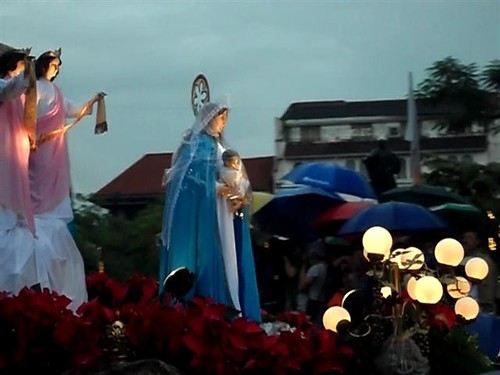
Mary in the Christmas Story
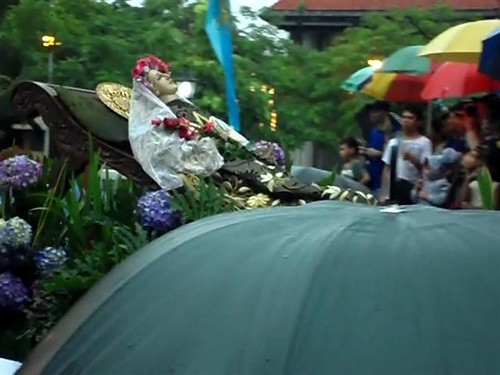
Dormicion

De Guia and the MALP Hermandad Members
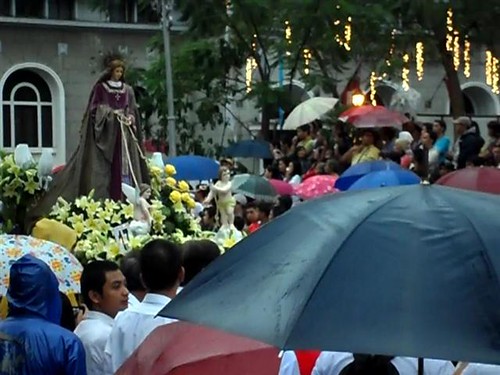
Mary untier of Knots
Mary Untier of Knots or Mary Undoer of Knots is a Baroque icon (German: Wallfahrtsbild or Gnadenbild) by Johann George Melchior Schmidtner, of around 1700, in the Catholic pilgrimage church of "St. Peter am Perlach", otherwise Perlach church, in Augsburg, Bavaria, Germany.

It shows the Virgin Mary untying knots and at the same time treading on the head of a snake, representing the devil and symbolising the prophecy in Genesis 3.15 that "[thy seed] shall bruise the serpent's head". Below Mary is illustrated an incident from the Book of Tobit: the Archangel Raphael with Tobias on the way to Sarah, daughter of Raguel, to ask for her hand in marriage.
The concept of Mary untying knots is derived from St. Irenaeus of Lyons' book Adversus haereses (Against Heresies). In Book III, Chapter 22, he explains that "... the knot of Eve's disobedience was loosed by the obedience of Mary. For what the virgin Eve had bound fast through unbelief, this did the virgin Mary set free through faith." Taken from Mary Untier of Knots

Vessel of Honor
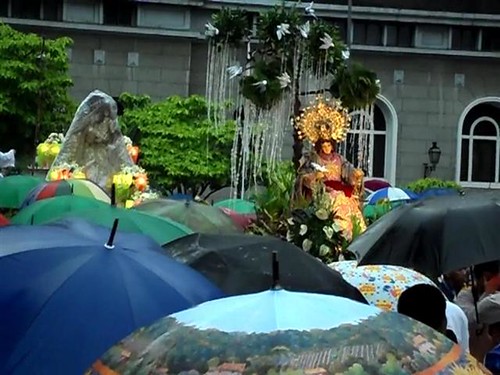
Mirror of Justice

Our Lady of Goodwill and Pieta

Health of the Sick

Mary, health of the Sick
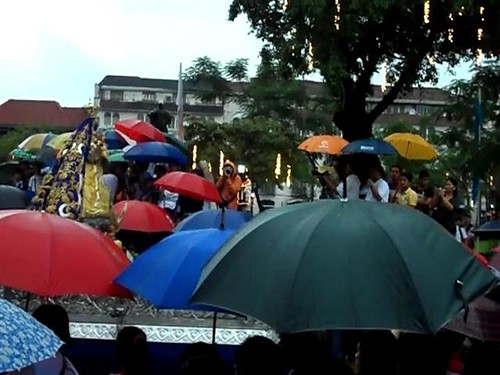
Last minute decorations but still made it in time for the procession
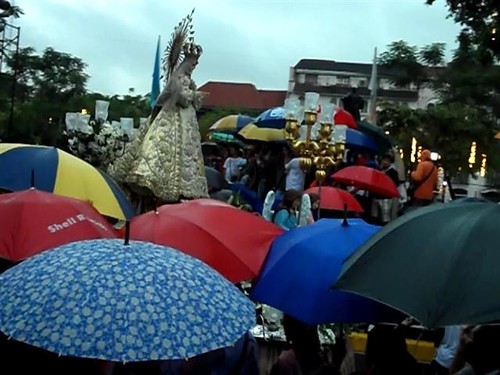
Our Lady of the Holy Trinity
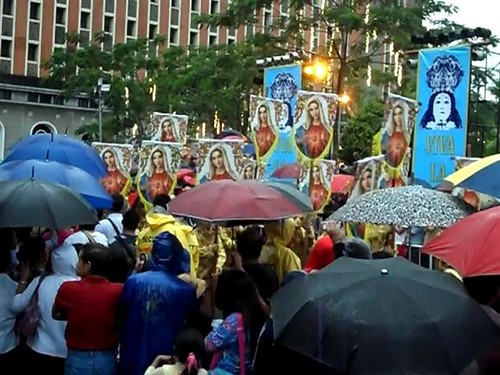
Dancing images of Mary
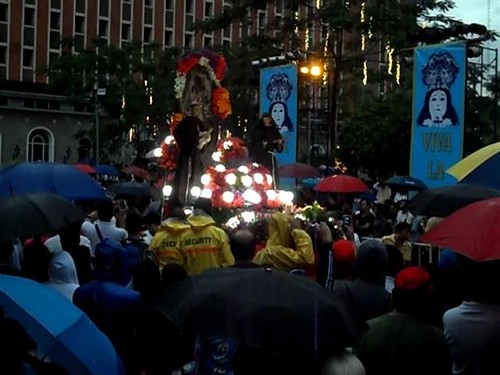
Our Lady of Angels with St. Anthony and St. Francis of Assisi
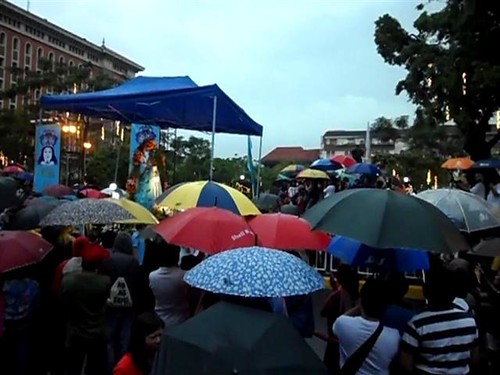
Our Lady of Cabra...dramatic entrance with the huge moving tent...
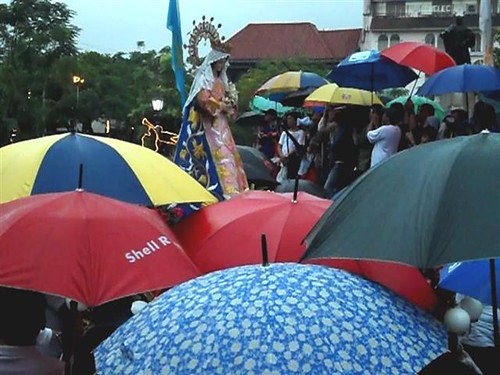
Amabilis

Our Lady of Stars
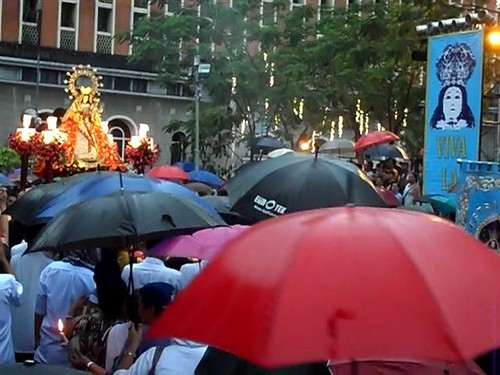
Our Lady of Aranzazu
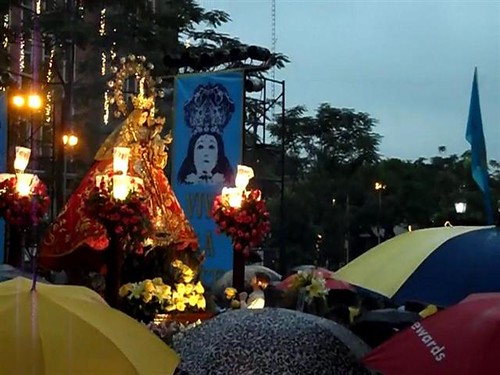
The standing Aranzazu
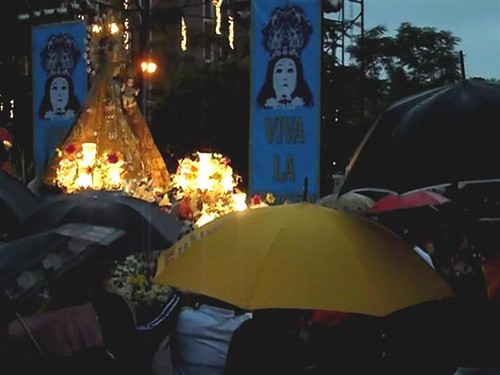
Our Lady of the Sacred Heart of Jesus
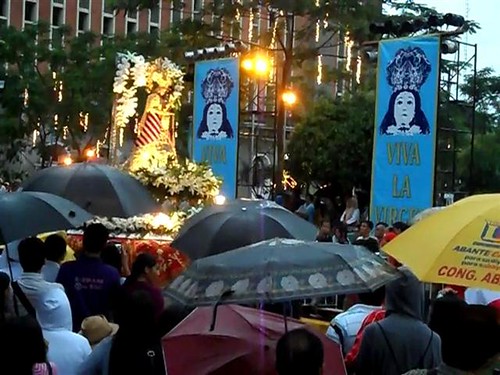
De Baranggay
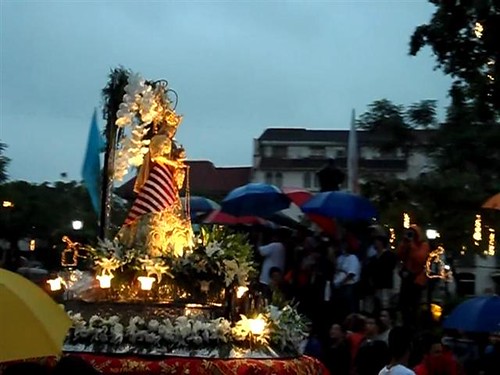
A Filipiniana Virgin
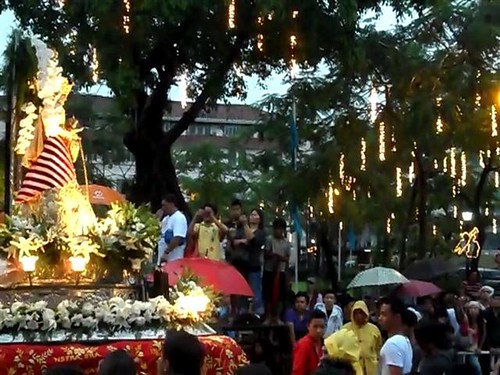
Exiting Plaza Roma

Montserrat
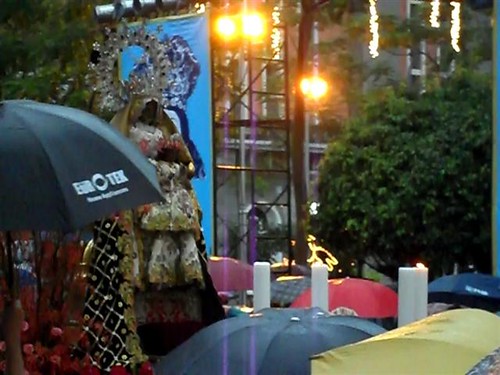
The Black Madonna
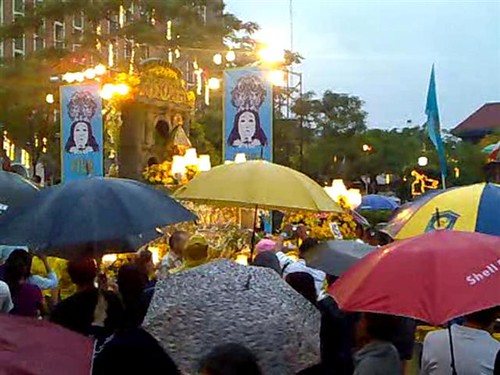
Caysasay
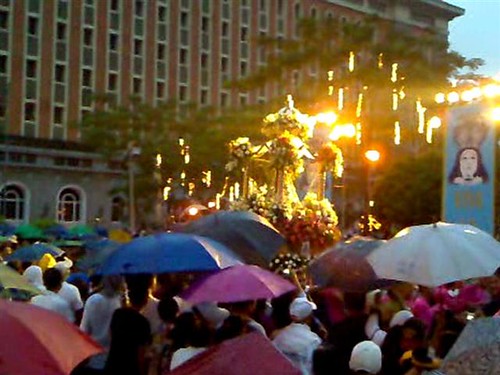
Our Lady of Sorrows
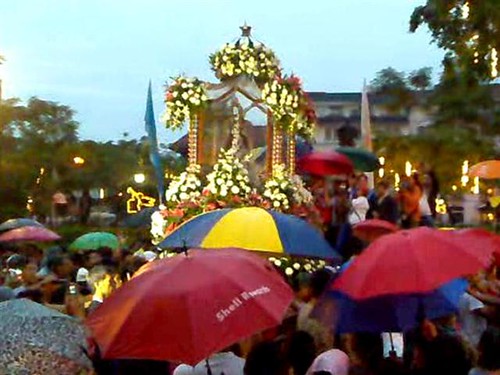
Turumba sa Mahal na Birhen
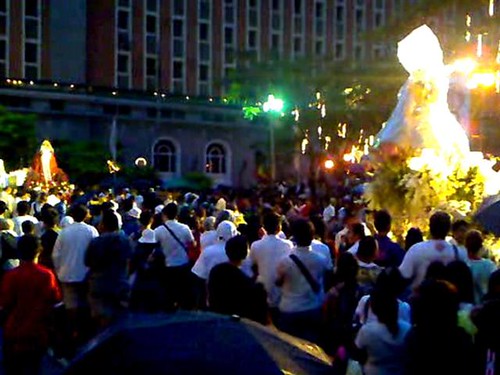
Nazarena...more images to come, I can't believe myself...I was already wishing the procession will soon end...aside from the rain, the winds grew stronger...so wet and so cold...
And the procession continued...
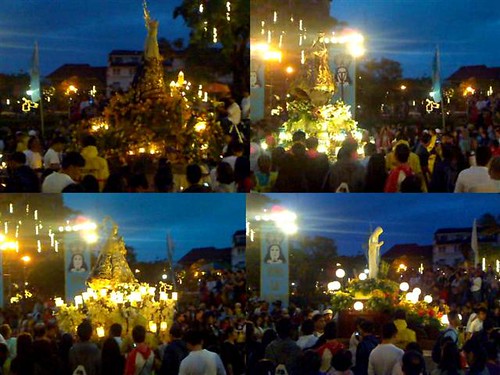

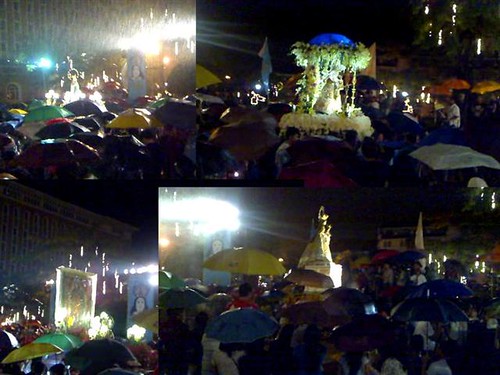

Esperanza de Macarena in Plaza Roma
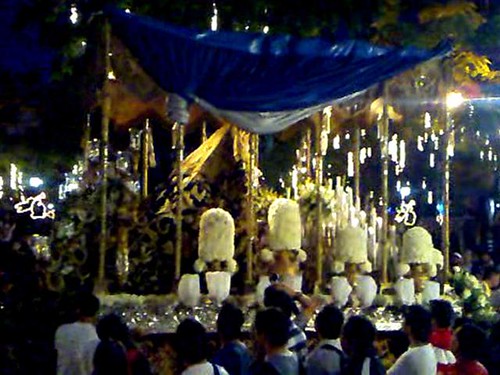
Pallio-side
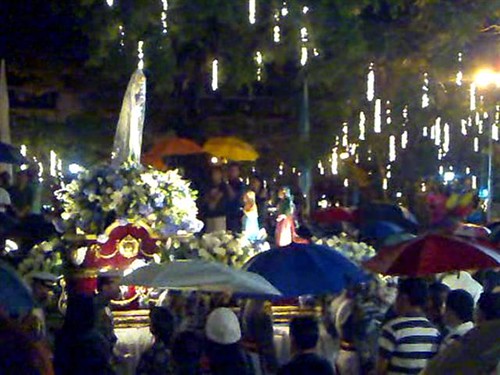
Our Lady of Fatima
The Coronada's
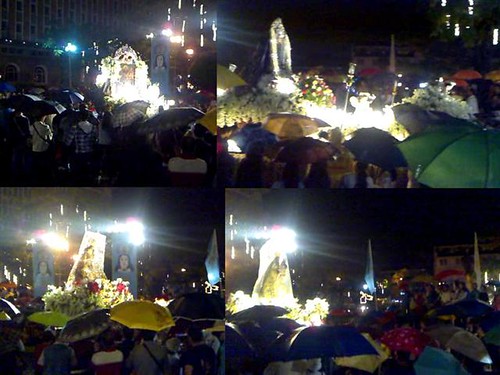
Canonically crowned images of Mary in the Philippines
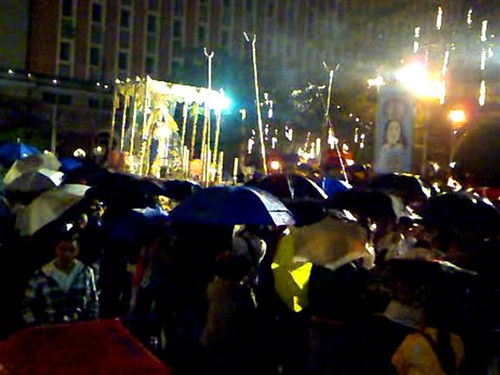
Queen of Pasig...
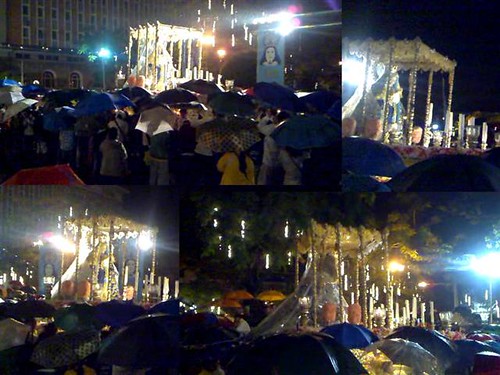
...the Immaculate Conception
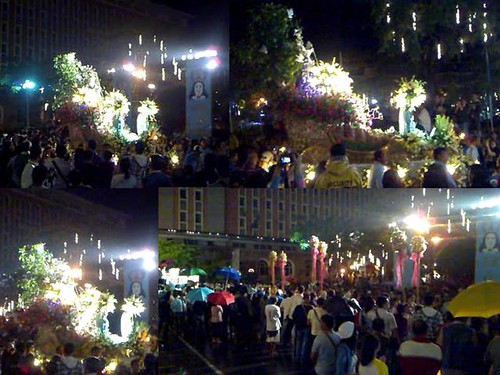
Divina Pastora in Plaza Roma
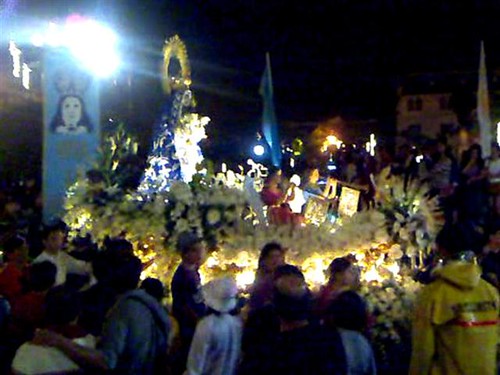
Our Lady of Piat
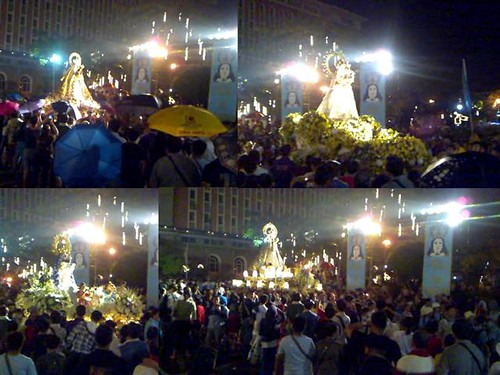
The different del Rosario Images of the Philippines: Orani, Piat and La Naval
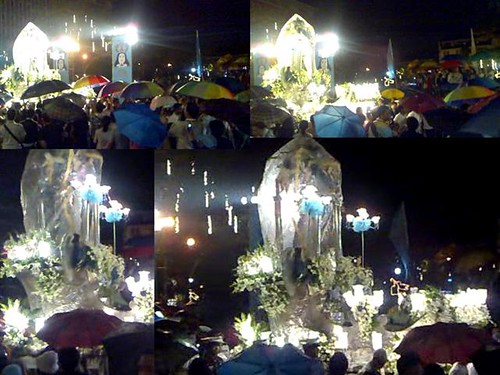
The Immaculate Conception, Cofradia's Festejada Image
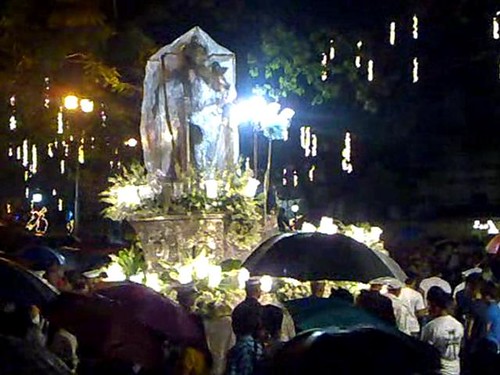
Exiting Plaza Roma
The Immaculate Conception of Mary is a dogma of the Roman Catholic Church, according to which the Virgin Mary was conceived without any stain (in Latin, macula or labes, the second of these two synonymous words being the one used in the formal definition) of original sin.[1][2] It is one of the four dogmata in Roman Catholic Mariology. It is completely distinct from the Virginity of Mary and the virgin birth of Jesus, though it is a popular mistake to confuse them. Mary is sometimes called the Immaculata (the Immaculate One), particularly in artistic contexts.[3]
The proclaimed Roman Catholic dogma states "that the most Blessed Virgin Mary, in the first instance of her conception, by a singular grace and privilege granted by Almighty God, in view of the merits of Jesus Christ, the Saviour of the human race, was preserved free from all stain of original sin".[1] Being always free from original sin, she was from the start filled with the sanctifying grace that would normally come with baptism after birth. Although widely-held since at least Late Antiquity, the doctrine was not formally proclaimed until Pope Pius IX did so in 1854 in Ineffabilis Deus. Today, the Feast of the Immaculate Conception in honor of the Blessed Virgin Mary is nominally celebrated in many countries, both either as a public holiday or Holy Day of Obligation. Taken from Immaculate Conception

Going to Intramuros amidst the strong rains was challenging. Taking pictures behind a sea of umbrella's proved hard and frustrating at times. Being soaked in the rain and vulnerable to the wind tested my endurance. But the thing is, it doesn't matter, I have seen another GMP! Viva Inmaculada Concepcion! Viva!
